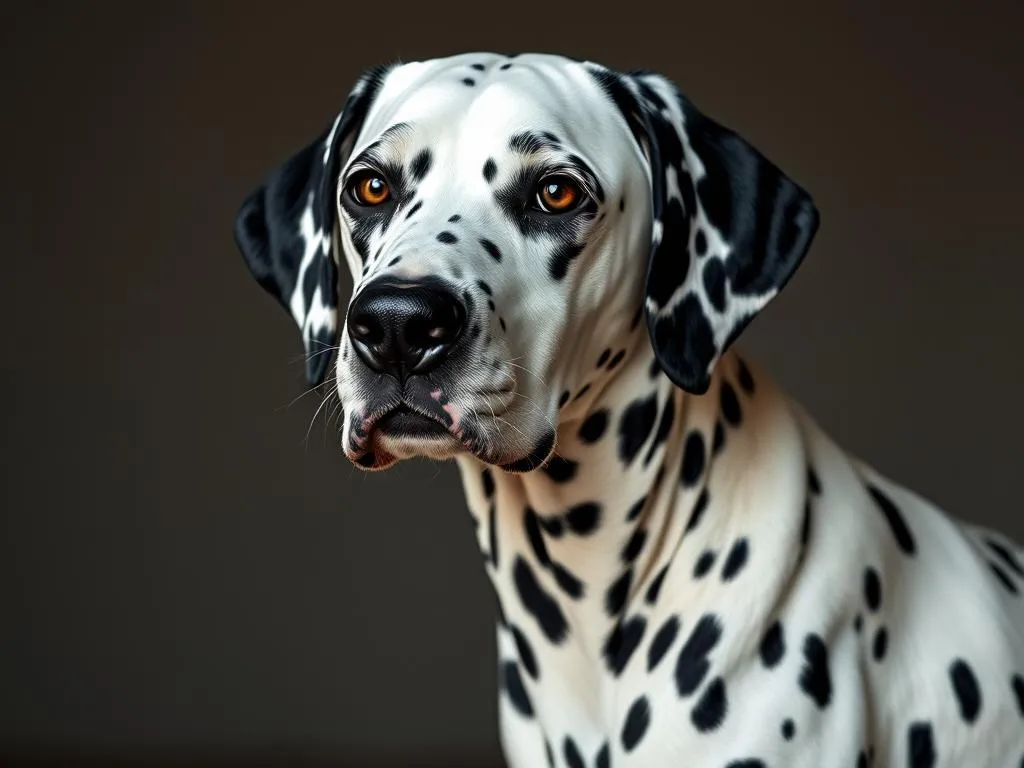
Dalmatians, with their striking black or liver-spotted coats, have captivated dog lovers for centuries. Their unique appearance and spirited personality often lead people to wonder: what were Dalmatians bred for? Understanding the origins and historical roles of Dalmatians not only enriches our appreciation for this breed but also provides insights into their behavior and needs today.
Historical Background of Dalmatians
Origin of the Breed
The story of the Dalmatian begins in the Dalmatia region of Croatia, where the breed is thought to have originated. This coastal area, known for its picturesque landscapes, also holds a rich tapestry of history and culture that influenced the development of the breed. Historical references to Dalmatians can be found in ancient manuscripts, paintings, and even sculptures, highlighting their significance in various periods of history.
Evolution Over Time
Dalmatians evolved over centuries through selective breeding practices that focused on enhancing their utility. Different cultures, including the Romans and various European aristocrats, contributed to the breed’s characteristics. For instance, their endurance and agility made them ideal companions for horse-drawn carriages, which was a prominent mode of transportation in the 18th and 19th centuries. This evolution led to a versatile breed that excelled in various roles throughout history.
Primary Purposes for Breeding Dalmatians
Firehouse Dogs
One of the most notable roles of Dalmatians was as firehouse dogs in the 1800s. In an era when fire trucks were horse-drawn, Dalmatians played a crucial role in assisting firefighters. Their natural instincts allowed them to run alongside the horses, helping to clear the way and guide them through crowded streets. Moreover, once at the fire scene, Dalmatians served as protectors, watching over the horses and equipment while firefighters battled the flames. This relationship solidified their status as brave and loyal companions in a dangerous profession.
Coach Dogs
Before the advent of modern transportation, Dalmatians were widely used as carriage dogs during the 18th and 19th centuries. They were bred to protect the horses and the valuable carriages from potential threats, including thieves and other animals. Their alertness and protective instincts made them indispensable in this role, as they would bark to warn of danger and fend off any unwanted intruders. This bred-in instinct for guarding made them a favorite among wealthy families who owned horse-drawn carriages.
Ratters and Vermin Control
In addition to their roles as firehouse and coach dogs, Dalmatians were also valued as ratters, skilled in vermin control on farms and estates. Their keen hunting instincts allowed them to chase and capture rodents, making them valuable companions for farmers. This trait not only kept food supplies safe from pests but also showcased the versatility of Dalmatians in fulfilling various practical roles.
Characteristics that Made Dalmatians Ideal for Their Roles
Physical Traits
Dalmatians are easily recognizable thanks to their distinctive coat, which is typically white with black or liver-colored spots. This unique appearance is not just for looks; it also offers some advantages in their historical roles. Their size—medium but muscular—combined with their agility made them exceptional runners, capable of keeping pace with horses and navigating through crowded environments. These physical traits were essential for their effectiveness in various tasks.
Temperament and Behavior
Beyond their physical attributes, Dalmatians are known for their sociable and energetic nature. They are highly intelligent dogs, which makes them trainable but also requires proper mental stimulation and engagement. Their friendly disposition often makes them great companions for families, although their high energy levels necessitate regular exercise to ensure they remain well-behaved and happy. This combination of traits has allowed Dalmatians to transition from working dogs to beloved pets in many households.
Modern Uses and Adaptations
Companion Animals
As societal needs evolved, so did the purpose of Dalmatians. Today, they are more commonly kept as family pets. Their popularity surged due to their appearances in films and media, most notably in Disney’s “101 Dalmatians.” This shift from working dog to cherished family companion has made them a staple in many homes, where their playful and affectionate nature can be fully appreciated.
Working Dogs Today
Despite their new roles as companion animals, Dalmatians still find places in working environments. They are utilized in therapy and service dog programs, where their intelligence and adaptability shine. Their ability to connect with humans makes them effective in providing emotional support to those in need. Additionally, Dalmatians are sometimes involved in search and rescue operations, thanks to their keen sense of smell and strong physical capabilities.
Sports and Activities
Dalmatians thrive in environments where they can showcase their agility and endurance. Many owners engage their Dalmatians in dog sports such as agility competitions, obedience trials, and even dock diving. These activities not only provide physical exercise but also stimulate their minds, keeping them engaged and satisfied. Regular participation in such sports helps to maintain their health and enhances the bond between dog and owner.
Caring for a Dalmatian
Health Considerations
Like all breeds, Dalmatians come with specific health considerations. They are prone to certain genetic conditions, such as deafness and urinary stones, which can affect their quality of life. Regular veterinary check-ups are essential to monitor their health and catch any issues early. Additionally, responsible breeding practices can help mitigate some of these health concerns.
Training and Socialization
Training a Dalmatian can be both rewarding and challenging. Their intelligence means they can learn commands quickly, but they also require consistent training to curb any stubbornness. Positive reinforcement methods work best, and early socialization is crucial. Exposing them to various environments, people, and other animals helps them develop into well-rounded companions.
Exercise and Mental Stimulation
Dalmatians are high-energy dogs that require ample exercise to maintain their physical and mental health. Daily walks, runs, or play sessions are essential. Activities that challenge their minds, such as puzzle toys or obedience training, are equally important. Engaging them in both physical and mental exercises ensures they remain happy and reduces the likelihood of behavioral issues.
Conclusion
Understanding what Dalmatians were bred for offers valuable insights into their unique traits and needs. From their historical roles as firehouse dogs and protectors of carriages to their current status as beloved family pets, Dalmatians have a rich legacy that continues to evolve. As they transition from working animals to cherished companions, it is crucial to appreciate their history and provide them with the love and care they deserve.
In summary, Dalmatians are not just iconic for their looks; they are a breed with a purpose. Their journey from hardworking dogs to family favorites reflects the changing dynamics of human-animal relationships. By appreciating their origins, we can better meet their needs and enhance the bond we share with these remarkable dogs.
Frequently Asked Questions (FAQs)
What is the lifespan of a Dalmatian?
Dalmatians typically have a lifespan of 10 to 13 years, although with proper care, some can live longer. Regular veterinary check-ups, a balanced diet, and adequate exercise can contribute to a longer, healthier life.
Are Dalmatians good family pets?
Yes, Dalmatians can make excellent family pets. They are known for their friendly and sociable nature, but they do require attention, exercise, and proper training to thrive in a family environment.
How much exercise do Dalmatians need?
Dalmatians are high-energy dogs that require at least 1 to 2 hours of exercise each day. Activities can include walks, runs, playtime in the yard, or engaging in dog sports.
Do Dalmatians have any specific health concerns?
Yes, Dalmatians can be prone to certain health issues, including deafness, urinary stones, and skin conditions. Regular veterinary care and responsible breeding practices can help manage these concerns.









